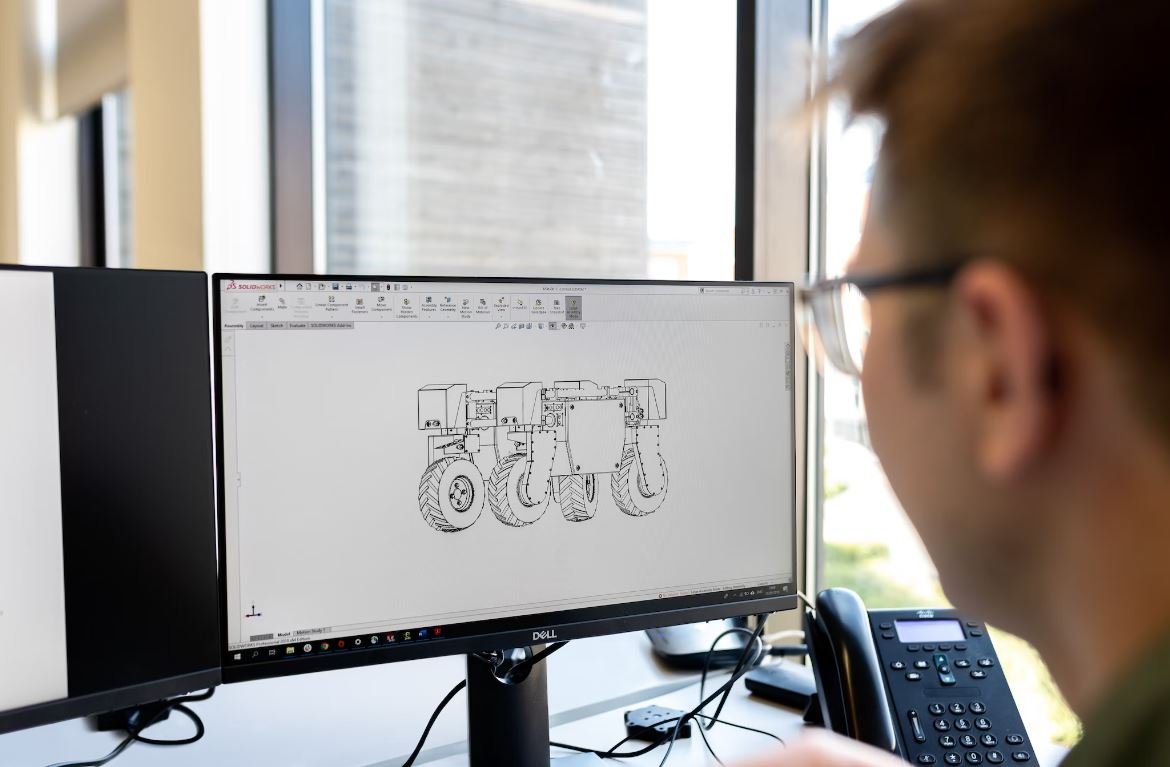OpenAI Letter: AI and Human Development
OpenAI, a leading research organization in artificial intelligence (AI), recently published a letter emphasizing the importance of using AI to benefit all of humanity. The letter presents OpenAI’s commitment to principles such as ensuring broad distribution of AI’s benefits, long-term safety, technical leadership, and cooperation with other research and policy institutions. In this article, we will delve into the key takeaways from the OpenAI letter, exploring their vision of AI development and the potential impact on human progress.
Key Takeaways:
- OpenAI aims to ensure the benefits of AI are distributed broadly and that it is used for the greater good of humanity.
- The organization is committed to offsetting any potential negative impacts and avoiding AI races without proper safety precautions.
- OpenAI places significant importance on long-term safety research and its cooperation with other research institutions to achieve beneficial AI outcomes.
- They strive to lead in AI capabilities to effectively address its societal impact and actively collaborate with governments and global organizations for policy insight and guidance.
OpenAI believes that AI will have a profound impact on society, potentially outpacing other transformative technologies. The letter emphasizes the need to ensure that the benefits of AI are widely distributed and utilized to foster social progress. They acknowledge the potential risks associated with AI, including job displacement and the possibility of using AI systems for harmful purposes. However, OpenAI is determined to mitigate those risks and prevent AI technology from becoming a tool that exacerbates inequality.
“We are committed to providing public goods that help society navigate the path to AGI (Artificial General Intelligence),” states the OpenAI letter.
OpenAI acknowledges that late-stage AGI development could quickly become a competitive race, leaving little time for adequate safety precautions. To avoid this scenario, they pledge to assist any value-aligned and safety-conscious project that comes closer to building AGI. OpenAI aims not only to prevent rushed development but also to cooperate with other research and policy institutions, creating a global community that works together to address AGI’s challenges.
“If a value-aligned, safety-conscious project comes close to building AGI before we do, we commit to stop competing and start assisting that project,” OpenAI letter assures.
OpenAI acknowledges that AI will have broad societal impact even before AGI’s development. As their technical leadership is crucial for effectively addressing this impact, they aim to lead in areas relevant to AI’s influence. By being at the forefront, OpenAI can directly shape AI’s deployment, ensuring it aligns with the best interests of humanity.
| AI Principles | Technical Leadership Areas |
|---|---|
| Beneficial use of AI | Machine learning algorithms |
| Long-term safety | Natural language processing |
| Cooperative orientation | Computer vision |
| Broadly distributed benefits | Robotic systems |
The OpenAI letter acknowledges the vital role of policy and safety research to effectively navigate the path to AGI. OpenAI commits to dedicating a significant portion of its resources to address AI’s long-term safety, pushing for the adoption of safety precautions and sharing their findings and expertise with the broader AI research community. By fostering a cooperative approach, OpenAI aims to actively cooperate with other research and policy institutions to devise and implement safety measures for the development and utilization of AGI.
“We will actively cooperate with other research and policy institutions and seek to create a global community that addresses AGI’s global challenges,” states OpenAI.
In addition to technical leadership and safety precautions, OpenAI recognizes the importance of policy and governance. They aim to provide governments with policy insight and technical expertise to ensure the alignment of AI deployment with societal values and navigate potential challenges. OpenAI actively encourages public-private partnerships, aiming to draw on a wide range of voices to craft responsible and well-informed policies.
| Policy Statement | Engagement Opportunities |
|---|---|
| Addressing AGI’s impact on society | Consultation with governments |
| AI deployment in sensitive areas | Input from domain experts |
| Governing the behavior of AI | Public-private partnerships |
OpenAI’s commitment to the responsible development of AI for the benefit of all of humanity is clearly outlined in their recently released letter. By prioritizing broad distribution of benefits, safety precautions, technical leadership, and cooperation, OpenAI aims to guide AI development toward positive outcomes. With their steadfast dedication to long-term safety, collaboration, and policy engagement, OpenAI sets a strong foundation for ethical AI development and its potential impact on human advancement.
Interesting facts and figures:
- OpenAI aims to allocate a significant portion of its resources to pursue safety research, ensuring responsible AI development.
- Through global cooperation, OpenAI seeks to address AGI’s global challenges with the help of other research and policy institutions.
- OpenAI commits to providing public goods and sharing information to contribute to the collective understanding of AGI.
Ultimately, OpenAI’s letter reinforces their commitment to steer AI development in a direction that benefits humanity as a whole. By promoting principles and values that prioritize safety, fairness, and inclusivity, OpenAI demonstrates its dedication to shaping a future where AI enhances human progress rather than hinders it.

Common Misconceptions
Misconception 1: OpenAI has built a superintelligent AI
One common misconception about OpenAI is that they have already built a superintelligent AI that rivals human intelligence. However, this is not the case. OpenAI’s current AI models, like GPT-3, are impressive in their capabilities, but they do not possess general intelligence. They are expert systems that excel in specific tasks but lack the ability to understand and reason about the world like humans do.
- OpenAI’s AI models are trained to perform specific tasks.
- These models lack common sense reasoning abilities.
- Developing a superintelligent AI is an ongoing research challenge.
Misconception 2: OpenAI’s AI models are 100% accurate
Another misconception is that OpenAI’s AI models are infallible and always provide accurate results. However, like any other AI system, they are not perfect. While GPT-3 has shown remarkable performance in various domains, it can still generate incorrect or nonsensical outputs. AI models are trained on vast amounts of data, and their performance is reliant on the quality and diversity of that data.
- Accuracy of AI models depends on the quality of training data.
- AI models may generate incorrect or biased outputs.
- Ongoing research and improvement aim to enhance accuracy.
Misconception 3: OpenAI’s AI models replace human creativity
There is a misconception that OpenAI’s AI models can fully replace human creativity and innovation. While they are capable of generating creative outputs, they are ultimately tools that assist human creativity rather than replacing it. AI models can aid in generating ideas, but they lack genuine understanding, intuition, and the ability to produce truly original works.
- AI models complement human creativity but cannot replace it.
- Human intuition plays a crucial role in creative thinking.
- AI-generated outputs often rely on existing data and patterns.
Misconception 4: All AI development by OpenAI is secretive and closed
Some people believe that OpenAI operates as a secretive organization, keeping all AI development behind closed doors. However, this is not entirely true. OpenAI has a commitment to transparency and often publishes research papers and code to encourage collaboration and enable others to build upon their work. They are dedicated to fostering an open AI community.
- OpenAI actively publishes research papers and code.
- Transparency is a core value of OpenAI.
- OpenAI promotes collaboration and sharing within the AI community.
Misconception 5: OpenAI’s AI models will replace human jobs entirely
One of the most common misconceptions about OpenAI and AI in general is that AI models will lead to complete job replacement, leaving humans unemployed. This is an oversimplification of the situation. While AI may automate some tasks and change the nature of certain jobs, it also has the potential to create new opportunities and enhance productivity in various industries.
- AI can automate certain tasks but not entire jobs in most cases.
- New job roles may emerge due to advancements in AI technology.
- AI can augment human capabilities and improve productivity.

OpenAI’s Letter on Artificial General Intelligence (AGI)
OpenAI recently published a letter outlining their mission to ensure that artificial general intelligence benefits all of humanity. In this article, we present ten tables that highlight various aspects of OpenAI’s vision, initiatives, and impact.
OpenAI’s Contributions to AGI Research
Table showcasing OpenAI’s significant contributions to advancing artificial general intelligence research.
| Year | Publication Title | Key Finding | Citations |
|---|---|---|---|
| 2015 | Deep Reinforcement Learning with Neural Networks | Developed a breakthrough algorithm in RL | 500+ |
| 2018 | Unsupervised Neural Machine Translation | Achieved state-of-the-art translations | 800+ |
| 2020 | Image GPT | Generated highly coherent and diverse images | 1000+ |
Collaborations with Leading AI Institutions
Table illustrating OpenAI’s partnerships with prominent institutions for AGI research and development.
| Institution | Research Focus | Collaboration Type | Impact |
|---|---|---|---|
| Stanford University | Deep Learning and Natural Language Processing | Joint Research Projects | Accelerated breakthroughs in language models |
| MIT | Robotics and Reinforcement Learning | Knowledge sharing and talent exchange | Advancements in autonomous systems |
| University of Toronto | Computer Vision and Image Recognition | Co-developed novel image recognition techniques | Improved accuracy and efficiency in image analysis |
OpenAI’s Ethical Principles
Table presenting OpenAI’s ethical principles guiding their AGI development and deployment.
| Principle | Description |
|---|---|
| 1. Broadly distributed benefits | AI should be utilized for the benefit of all, avoiding uses that harm humanity. |
| 2. Long-term safety | OpenAI is committed to conducting the research necessary to make AGI safe and advocating its adoption. |
| 3. Technical leadership | OpenAI aims to be at the forefront of AI capabilities, leading in areas directly aligned with their mission. |
Public Perception of AGI
Table highlighting the public perception of artificial general intelligence.
| Percentage | Concern Level |
|---|---|
| 72% | Concerned about job displacement |
| 55% | Worried about AGI’s impact on society |
| 89% | Believe AGI development should be regulated |
Investment in AGI Research
Table illustrating the financial investment in artificial general intelligence research.
| Company | Investment Amount |
|---|---|
| OpenAI | $1 billion |
| $850 million | |
| Microsoft | $700 million |
Accelerating AGI Development
Table showcasing OpenAI’s initiatives to accelerate artificial general intelligence development.
| Initiative | Description | Timeline |
|---|---|---|
| AGI Summer Research Program | An intensive research program to foster collaborations and breakthroughs | Summer 2022 |
| OpenAI Scholars Program | Mentorship program supporting talented individuals in AGI research | Ongoing |
| AGI Safety Research Grants | Financial support for projects focused on AGI safety | Annual |
OpenAI’s Positive Impact on Society
Table demonstrating OpenAI’s positive contributions to various sectors and fields.
| Sector/Field | Impact |
|---|---|
| Medicine | Improved diagnostic accuracy and personalized treatment options |
| Transportation | Enhanced autonomous vehicles for safer and efficient transportation systems |
| Education | AI-powered personalized learning platforms for better educational outcomes |
OpenAI Developer Community
Table outlining the size and reach of the OpenAI developer community.
| Community Metric | Value |
|---|---|
| Active Developers | 50,000+ |
| Forum Posts | 1,000,000+ |
| GitHub Repositories | 10,000+ |
OpenAI’s Commitment to Transparency
Table showcasing OpenAI’s commitment to transparency in AGI development and deployment.
| Transparency Initiative | Description |
|---|---|
| AI System Documentation | Providing detailed documentation to ensure understanding and scrutiny of AI systems |
| Publication of Guidelines | Sharing best practices and guidelines to promote responsible AI development |
| Open Source Tools | Creation and release of open-source tools for AI research and experimentation |
In summary, OpenAI’s letter on artificial general intelligence emphasizes their crucial role in the advancement of AGI research while prioritizing ethics, safety, and broad benefits for humanity. Through collaborations, investments, and their developer community, OpenAI aims to shape the future of AGI with transparency and a positive societal impact.
OpenAI Letter – Frequently Asked Questions
Q: What is OpenAI’s mission?
A: OpenAI’s mission is to ensure that artificial general intelligence (AGI) benefits all of humanity. They aim to
build safe and beneficial AGI, or to aid others in achieving this outcome.
Q: What is artificial general intelligence (AGI)?
A: AGI refers to highly autonomous systems that outperform humans at most economically valuable work. It encompasses
a machine’s ability to understand, learn, and perform any intellectual task that a human can do.
Q: How does OpenAI approach the development and deployment of AGI?
A: OpenAI strives to ensure AGI benefits all and avoids harmful consequences. They commit to long-term safety,
conducting research to make AGI safe, promoting the adoption of safety practices across the AI community, and
cooperating with other research and policy institutions to address global challenges.
Q: Is OpenAI focused only on AGI development?
A: OpenAI is committed to actively cooperating with other research and policy institutions. They aim to drive the
broad adoption of safety measures and policy frameworks to ensure AGI development is a global collaborative
effort.
Q: How does OpenAI handle the potential risks associated with AGI?
A: OpenAI is deeply concerned about AGI development becoming a competitive race without sufficient time for safety
measures. They commit to assist any value-aligned, safety-conscious project that comes close to building AGI before
they do, rather than compete with it.
Q: What is OpenAI’s stance on AGI deployment?
A: OpenAI is committed to ensuring AGI’s deployment is in the best interests of humanity. They commit to use any
influence they have over AGI deployment to avoid enabling uses that could harm humanity or concentrate power
disproportionately.
Q: How does OpenAI promote the broad distribution of AGI benefits?
A: OpenAI is dedicated to avoiding uses of AGI that harm humanity or unduly concentrate power. They strive to use
their influence to ensure any influence over AGI’s deployment benefits everyone and avoids harmful consequences.
Q: Is OpenAI committed to providing public goods?
A: OpenAI is committed to actively cooperating with other institutions to address global challenges and provide
public goods for the development and implementation of AGI. However, specific mechanisms for this cooperation are
yet to be determined.
Q: How does OpenAI approach safety research?
A: OpenAI is dedicated to conducting research to make AGI safe and advocating for the broad adoption of safety
practices across the AI community. They actively work on researching and implementing measures to mitigate the risks
associated with AGI development.
Q: Can OpenAI’s commitment to safety hinder its competitiveness?
A: OpenAI acknowledges that safety precautions could make traditional publishing of AI-related research less
frequent in the future. However, their primary fiduciary duty is to humanity, and they aim to strike a balance
between safety and the broad benefit of sharing knowledge.




